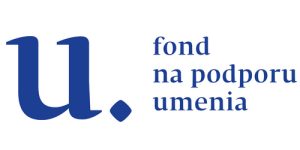In Slovakia, we have a tradition of a running writing system (cursive). Our ancestors used it, its beginnings date back to approximately the 19th century. Currently, experts are calling for its modernization, which has its roots in technological progress, with more and more typing done on different types of keyboards. The argument is also that it is easier to arrange and assign letters than to connect them, which simplifies the world of writing for dysgraphics or other children with disabilities. Neat handwriting is seen to be too demanding, a craft art for children. And as they age, they decide for themselves the writing style they will choose. In such a case, they will not have to choose, they will not know how to hand-write, unlees it is their hobby. However, in order to perceive writing in context, we can also look at the issue from another point of view. Already in early childhood, we put appropriately shaped aids in children’s hands and support them in drawing, as one of the highest forms of fine motor skills. Like everything in our body, it also develops and forms with age, being built on essential motor skills. If we walk or sit incorrectly, it is difficult for the brain to focus on the gentle movement of the hand. Also, the correct grip of the pen helps to release the brain’s capacity for better concentration on the hand rather than on balancing the body, balancing smaller muscle groups.
A child prepared in this way can paint circles. They are an essential element of children’s painting skills. Circles and round shapes are naturally pleasing to children, we observe the smooth, unbroken movement of the handle as an indicator that everything is in order, the eyes see, the mind keeps up.
We have a lot of arcs and circular shapes in the written font, I am sure you remember those first teardrops before you wrote the letter “a”. That is also why handwriting impresses us so much. Everything round, soft and circular is subconsciously associated with something pleasant.
In addition, our ancestors left us a delicacy in the form of combining letters into words. In our handwriting, we connect them with curves. Just as our neurons in the brain do not hang around alone and get connected, just as individuals in a society have a natural need to connect and bond themselves, our ancestors chose to connect letters. Do you ever feel like they are holding hands with those curves, like friends? Linking is more challenging on all levels, no doubt. But it has its therapeutic effect, it gives the mind time to think about the word as a whole as it is being written. It gives words some flow. Like a hand painting circles and waves and endless strokes, it is one of the sought-after therapeutic tools even in alternative neurotherapies. Did you like your diary or notebook you used to have as children like all of uss? We tried to write in different ways, and everyone really chose their own. Ultimately, everyone’s handwriting is absolutely unique. And yes, writing has been certainly seen at school as a craft that had to be perfected, with the goal being neat handrwriting. Yet we failed to realize that working on this skill should be enjoyable, that with the right attitude, less competition and pressure to achieve perfection, our writing is a therapeutic tool. A “free” lesson of writing therapy for every child without distinction right there at school. Maybe even for us adults, sometimes it would be worth writing to write in hand on an A4 sheet, trying to find one’s style, one’s feelings, putting one’s thoughts on paper.
Of course, our children can receive information even if we do not write in cursive. Someone has the experience that it is faster, others that it is easier. We reveive information in many different individual ways, just as we are not identical beings and our brains are unique. In other countries, it is a common practice is to use block type writing. Each culture offers different therapeutic tools in the educational system. In some cultures, orchestras are part of the teaching, where students create music. harmony together, connecting tones, in other cultures people focus on artistic expression or sports, which contain similar attributes. Our culture has brought us together through writing.
Writing is one of the tools of culture. As we modernize culture, we have every right to modernize this tool. Again, it’s just a question of what kind of culture do we want to have? Surely, writing is to be blamed for being unwieldy, or is our view of it and our expectations distorted? When a child paints a picture, we calmly evaluate it positively, and our expectations match the skills at the child’s age. We are careful not to discourage him or her from the joy that painting brings. Is writing something else? If we modernize it, we need to know all the benefits and anachronisms and look for ways to include benefits in education, be it a different form. Then we can say that the decision made sense.
And maybe we are not aware of one more detail. Handwriting also connects us to our ancestors. Have you ever read the letters your grandparents sent each other? I know our children will cope with it in the future. But we are the ones who have the power to decide what tools we will give them for this< The culture of our writing requires a cultural debate about where we are heading. Jana Javorská The Kultúrny kyslík (Cultural Oxygen) project was supported from public funds by the Arts Council (Fond na podporu kultúry) as the main partner.
